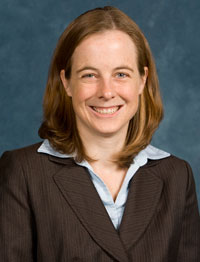
The International Journal of Solids and Structures (IJSS) has chosen a University-based research paper entitled, “Superelastic Shape Memory Alloy Cables” to receive the 2013 Best Paper Award. Alumnus Benjamin Reedlun, who received his masters and PhD from the U-M Department of Mechanical Engineering, Professor of Mechanical Engineering Samantha Daly, and Professor of Aerospace Engineering John Shaw, collaborated under a unifying interest — the behavior of shape memory alloy cables — to coauthor the paper.
Part I, “Isothermal Tension Experiments,” won the award this past November. Daly specializes in mechanics mixed with material sciences, while Shaw focuses on depth mechanics.
Shape memory alloy cables have two primary properties. Firstly, if the alloy is deformed, it will return to its original shape when heated. This property is primarily used in the process of producing actuators. However, there is a second, less explored property, on which the authors have chosen to focus. When the alloy is hot, it becomes superelastic. In this state, it is able to be stretched farther than usual, yet retains the ability to snap back to its original state. Under the same conditions, other metals would become permanently deformed.
Reedlun, who joined the two professors to broaden his understanding of the alloys’ behavior, explained the originality of the paper’s concentration by emphasizing the fact that these “restorative forces” are not widely considered for modern applications.
“Shape memory alloy cables have not been extensively used yet, and we thought they had a lot of potential,” Reedlun said. “We thought they could also be used in seismic applications because the superelastic effect allows it to dissipate energy.”
The cables would have the ability to suppress and dampen vibrations inside of structures, such as bridges and buildings. The authors will present their findings, along with suggestions for potential applications in June 2014 at the 17th U.S. National Congress on Theoretical & Applied Mechanics. Reedlun hopes the audience will understand the significance of their findings, especially in relation to future research.
“These cables and shape memory alloys in general have a lot of potential for numerous applications, but at the same time, as John Shaw would put it, ‘it’s not a spectator sport,’” Reedlun added. “Because of all of this added functionality, you have to understand what you’re doing, because there are some pitfalls, but there’s also some fascinating science behind it.”
Currently, Reedlun is doing research at Sandia National Laboratory in New Mexico. His work combines different types of shape memory alloy deformations, which should further contribute to a better understanding of the experimental results of the award-winning research paper.